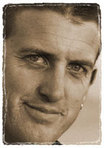What's in a fantasy book cover? Puzzling out the pixels for The Riddler's Gift.
I'm a fantasy fan, and so have a strong idea of what appeals to fantasy readers. Although the blurb must show there's an interesting concept, I only pick it up or click on the link because the cover caught my eye. A poor cover turns me off an interesting book, or at least pushes it down the wishlist to the point I might forget to buy it.
Good covers sell books. But when it comes to making a cover from scratch, I discovered it's not easy.
There's a thing called a 'graphic designer'. Now you might think I'm being a bit melodramatic about it, but I never considered it as a serious profession. Until I tried it myself, and then I really understood the need for artists who can communicate ideas visually. As a writer, you get pretty good at communicating things in written form. When your words are replaced with a swatch of RGB, there's a different kind of thinking required.
When I finished my fantasy novel The Riddler's Gift, I knew what the story was about; I could tell you in 250,000 words. But in one image?
 The best I could find was a photo I'd snapped on honeymoon in New Zealand. Here's a prototype book cover.
The best I could find was a photo I'd snapped on honeymoon in New Zealand. Here's a prototype book cover.
It's not bad for my purposes: it shows a jagged division between dark and light (the main themes of the book) and the idea of glorious sky (the song?) sweeping over a high place (Eyri). The ridge line is what I'd expect things to look like along the edge of the kingdom. But it's a bit static. There's that idea problem. The design doesn't communicate anything, it's just scenery.
Fantasy is an intensely visual genre. The worlds of fantasy authors like Tolkien and Le Guin appeal to me visually, I love a good sweeping descriptive adventure. The Lord of the Rings movie was a visual feast. Fantasy RPGs like Warcraft and Oblivion threatened to turn me into a gaming junkie. It's the things we get to imagine in these worlds that are so stimulating. So epic scenery isn't bad, but I knew I needed to share the idea of the book in the design somehow.
After enlisting the services of a design friend, we couldn't settle on something that worked. Maybe it was a dialogue I didn't know how to hold. Make it less 'anime', less 'dungeons and dragons' and more 'cool SF' isn't very helpful guidance. He left me with the useful background image and some typography, for which I'm grateful. So what do we have in the end?
 There's still a glimpse of those high peaks and a lot of space to hint at the new vistas, but now Tabitha is placed in the picture, and hopefully the design illustrates her dilemma: as magic dances up from her palm, the dark threat swoops down from the sky; drawn by her light and beauty.
There's still a glimpse of those high peaks and a lot of space to hint at the new vistas, but now Tabitha is placed in the picture, and hopefully the design illustrates her dilemma: as magic dances up from her palm, the dark threat swoops down from the sky; drawn by her light and beauty.
Her face is lit, which helps to bring her to the front of the design and create some depth relative to the birds. Sprites of magic dance up, hinting at the uplifting theme, to balance the darkness that frames the story, and to give it some movement in a visual triangle … up to the Riddler's, across to the R, down with the dark birds again.
The dark and the light is the primary axis of magic system in the first Tale of the Lifesong, so it was important to keep the colours limited to light, dark, and one colour.
There's a slightly magenta sky to represent the shift to an altered reality. The clouds communicate brooding tension, an imminent storm. The whole idea is to leave an intriguing impression. Would you 'turn the book over'? Does it work for you?
Puzzling out a cover design is a rewarding challenge. I'm under no illusions that it's a perfect artwork, but it communicates the mood and genre, and an idea of the story. Hopefully, this attracts the right kind of readers, who will enjoy that tale.



